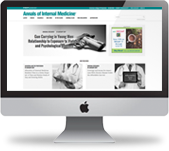Follow a few simple steps to ensure safety with vaccines
Needlesticks happen. Patients have the same or similar names. OSHA inspectors visit. Drugs are recalled. Now what?.
Needlesticks happen. Patients have the same or similar names. OSHA inspectors visit. Drugs are recalled. The results could be devastating: lost productivity, fines, misfiled labs, errors, death of a patient, lawsuit, etc. While some accidents are impossible to avoid, many of them can be easily prevented by using standard safety precautions.
When the Center for Practice Innovation (CPI) staff visited small medical practices across the United States, they found that many safety practices were not being followed. These simple tips will go a long way toward improving safety and reducing the chance of errors in your practice:
Two identifiers on all patient information. Don't make a simple mistake. Label all patient information with two identifiers. Examples of patient identifiers include name, date of birth, Social Security number, medical record number, telephone number, or address. Yes, this task takes an extra step but it can save you a lot of pain later and it is just good practice.
Sharps boxes. Do you have safe sharps containers? Sharps boxes should be the safety-top type and mounted on the wall at a level where the shortest member of your staff can clearly see the top of the box. They should be replaced when they are three-quarters full, or according to the manufacturer's recommendation.
Vaccine administration. Federal regulation requires that you record the date, time, manufacture's lot number, expiration date, date Vaccine Information Sheet (VIS) provided, and site of administration for every vaccine you give. Federal law also requires that every patient who gets a vaccination in your office receive an official and current VIS. Approved VIS forms are available in many different languages. Current VIS forms can be found here. .
Sample medication management and storage. Are you managing your sample medications appropriately? Sound management procedures include routinely checking for expiration dates, keeping medicines off the floor, labeling the sample medicines or writing prescribing information directly on the sample package, and keeping a log of sample medicines given for periods of time greater than three weeks. In case of a recall, keeping a log allows you to track down a patient to whom you had prescribed the recalled drug.
Refrigerators. Do your refrigerators have signs indicating their use? You should store vaccines and other medications separately from food, human specimens, and even substances used for point of care testing. You should also check your refrigerator's temperature every day.
Fire safety. Do you and all of your staff know where the fire extinguishers are located? Do you know what kind of extinguishers you have and how to use them? Fire extinguishers should be regularly inspected to ensure proper functioning. Finally, conducting fire drills in small offices may seem silly, but doing so can save lives!
Chart documentation. How well are you documenting non-prescription medications in your patient charts? How well are you actually documenting your patients' prescription medicines? Sample signs, forms and templates to help with many of these safety tips are available for free download from ACP's Web site. For more in patient safety issues, from the Center for Practice Innovation, see the April issue of ACP Internist and the next installment of its series on small practice issues.




